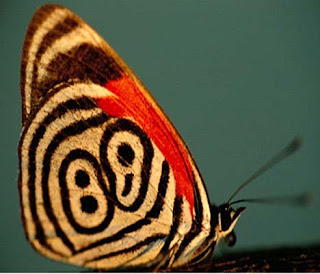New HAL production line targets Tejas build at
Rs 180 cr apiece
 India’s home-built Tejas Light Combat Aircraft (LCA) is poised to grab a large share of the limelight at the five-day Aero India 2011 air show in Bangalore, beginning on February 9. For the first time ever, a formation of five Tejas fighters will roar past the spectators during the inaugural fly-past. And, jostling with the world’s premier fighters, two Tejas prototypes will perform aerobatics displays that the pilots describe as “well beyond anything that we have ever displayed before”.
India’s home-built Tejas Light Combat Aircraft (LCA) is poised to grab a large share of the limelight at the five-day Aero India 2011 air show in Bangalore, beginning on February 9. For the first time ever, a formation of five Tejas fighters will roar past the spectators during the inaugural fly-past. And, jostling with the world’s premier fighters, two Tejas prototypes will perform aerobatics displays that the pilots describe as “well beyond anything that we have ever displayed before”.The growing momentum of the Tejas programme — masked by the hype around India’s $10-billion procurement of 126 medium fighters from the global market — is evident at the production line that is nearing completion in Hindustan Aeronautics Limited, Bangalore. This week, Business Standard was the first media house to visit the four massive hangars in which HAL will assemble the 40 Tejas fighters that the Indian Air Force (IAF) has already ordered and the trainers that the Indian Navy could soon ask for. A subsequent order of the improved Tejas Mark 2, expected to number more than a hundred fighters, will also be built here.
After years of seemingly endless development delays, the speed at which the Tejas is now coming on stream has apparently wrong-footed the IAF. The Sulur Air Base, near Coimbatore, the planned location of the first operational Tejas squadron, will only be ready by 2013. Consequently, HAL and the Aeronautical Development Agency (ADA), which oversees the Tejas programme, have agreed to house the first IAF squadron in Bangalore, allowing the IAF the use of a runway and one of the four new hangars.
“It will be good for all of us if the first IAF Tejas squadron operates from [Bangalore]”, says P S Subramanyam, the chief of ADA. “We are here to deal with teething problems. By the time the IAF moves to Sulur, the IAF technicians will have gained the experience to maintain the Tejas, with some hand-holding from us.”
HAL, which has spent the last two decades building 15 Tejas developmental prototypes, is now making the crucial transition to commercial production. Even as it builds the last two developmental aircraft, which will be given to the IAF for user evaluation, the first production fighter is already taking shape in HAL’s older facilities. Over the next year and a half, the entire manufacture will shift to the new production line.
“By March 2012, the first four fighters from the Tejas production line will be handed over to the IAF”, promises Ashok Nayak, Chairman and Managing Director of HAL. “And from then onwards we will step up production to 8 fighters per year.”
This involves a radical change in the way that HAL builds aircraft. Benji Mammen, HAL’s manager for the Tejas production line, explains that each developmental Tejas incorporated multiple improvements, which meant that each aircraft was significantly different from its predecessor. Now, having obtained operational clearance, HAL would build a standardised fighter, using automated assembly line processes that would speed up the process, as well as improve precision and build quality.
“Take the LCA wing, which is attached to a metal framework with rivets and bolts,” explains Mammen. “So far, we marked and drilled by hand the 3,000-odd holes which are used to attach the wing. Now we will automate the whole process, perhaps through the use of robots.”
With ADA having spent a little over Rs 6,000 crore so far in developing the Tejas, it is expected that the Indian fighter will cost Rs 180-200 crore apiece, with the naval version of the Tejas costing about Rs 10 crore more. Amortising the development cost over a production run of 200 fighters would raise the price by another Rs 30 crore apiece.
Says Subramanyam: “The Tejas could be 10-15 per cent cheaper if a bulk order was placed by the services. This would be significantly cheaper than the Swedish Gripen fighter. And considering that this amount has also paid for an aeronautical development ecosystem across the country — design establishments, human resources, testing infrastructure, upgrading of facilities, etc — it is money well spent.”























